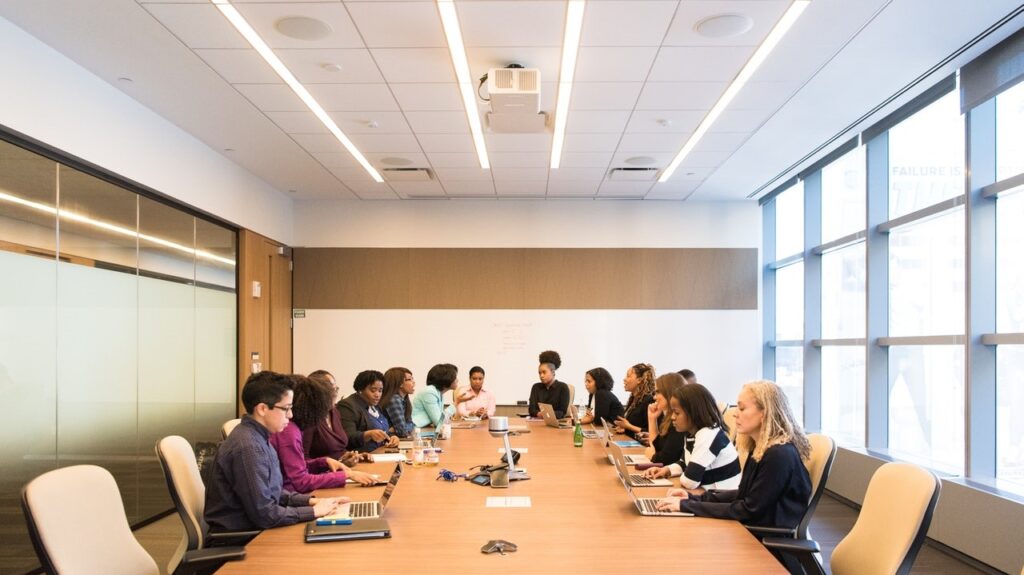Do Your Board Meetings Need a Makeover?

Courtesy of Christina Morillo from Pexels
In this new series, Meeting Makeovers, board development expert and founder of CSR Communications, Nancy Murphy, highlights a different meeting challenge each quarter and offers a makeover solution. Read the second blog in the series here.
This first installment, co-written with Ann Maddox Utterback, board chair of the JF Maddox Foundation, addresses the problem of “hand-me-down” meeting culture.
Problem Area: What to do with a “hand-me-down” meeting culture that doesn’t quite fit
Makeover Solution: Establish, and periodically refresh, board norms and operating agreements
In 2014, JF Maddox Foundation began a generational transition of its board, with the board chair role officially shifting to the younger generation in 2017. As is often the case, meeting culture, including structure, flow, agenda design, format of materials and minutes, was handed down from one generation to the next unconsciously.
It wasn’t until we looked closely in the mirror during our retreat-planning process, that we realized the hand-me-down meeting culture didn’t quite fit. Many of the agenda topics directors requested for the retreat, such as board culture and better board deliberation, reflected the struggles that come from walking in shoes that are too small or pants that are too long.
Just like hand-me-down clothes, those meeting practices and board norms weren’t inherently bad. They served the foundation well for decades. When applied to the current board, staff, and times, however, many were ill-fitting and outdated.
At the retreat, Nancy designed and facilitated a multi-step process to develop a set of board norms and related operating agreements.
- Step 1: Review what board norms are and how they help create and reinforce culture; how they contribute to effectiveness, including samples from other boards.
- Step 2: Reflect on who we are individually. What’s important (dreams, motivations, values)? What skills do I bring to the board? What are hazards of working with me? Do a communication style assessment.
- Step 3: Discuss implications for operating as a team and for board norms. How will these adjusted practices change decision making?
- Step 4: Assess our assumptions and beliefs. What are the mindsets, behaviors, assumptions and beliefs we use/have now? What will serve us better for Foundation 3.0? How do we build them? What are gaps and differences? How do these play out in board deliberation?
- Step 5: Who are we collectively? Use core values as a decision making tool – our “source code.” Share family and foundation stories that bring our values to life. How do family dynamics play out in board meetings? What works well with our meetings, and what gets in the way of effective outcomes and enjoying our time together?
- Step 6: Identify the behaviors and practices we want to establish as norms. What does it look like when we follow them and when we don’t? How will we hold each other accountable when we don’t follow them?
The JF Maddox Foundation board norms are:
- Respect time
- Ditto/Don’t repeat
- Good enough is perfect
- Questions over answers
- Shared responsibility for outcomes
- Everyone’s respected
From these norms flow specific operating agreements. For example, splitting and rotating responsibility for facilitation, timekeeping and note taking across agenda items is one practice tied to “shared responsibility for outcomes.” This takes the burden off the board chair for managing all three for the entire meeting.
The board reinforces these norms by displaying large printouts on the wall during meetings, including them at the top of every board and committee meeting agenda, and evaluating ourselves against them at the end of each meeting.
Board meetings are now less frustrating, more effective and more enjoyable, thanks to these common expectations and agreements.
The norms have served the board well since the 2018 retreat. And the board has grown since then, so at our 2021 retreat we’ll look in the mirror again to make sure they still fit.
Many kids just take what’s handed down to them from their parents, which often is a good thing, but it’s important to make that decision explicit. Boards need the occasional gut check—a pause—to step back and review what to keep and what’s ready for a refresh.
For more tips, download a free copy of the Meeting Makeover Kit.
The views and opinions expressed in individual blog posts are those of the author(s) and do not necessarily reflect the official policy or position of the National Center for Family Philanthropy.
